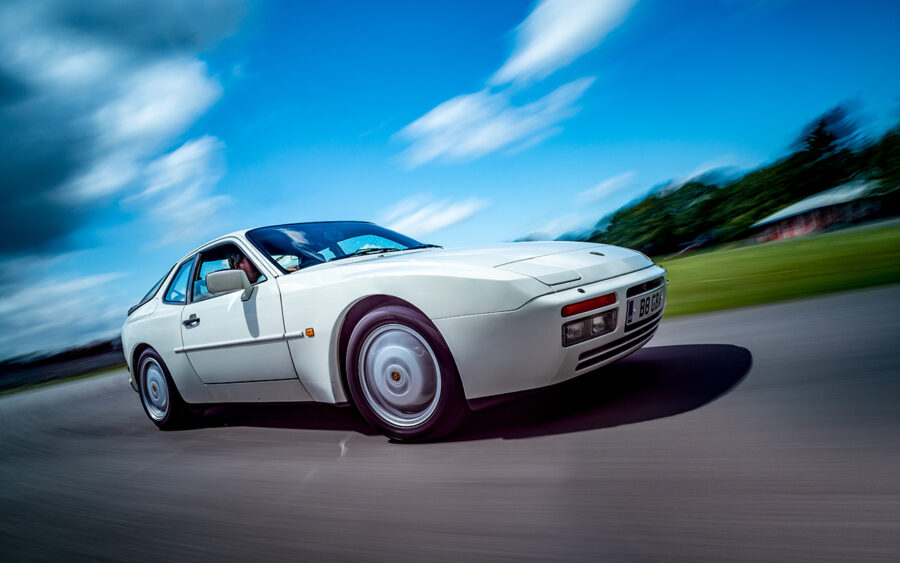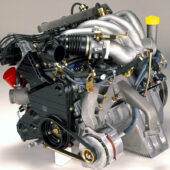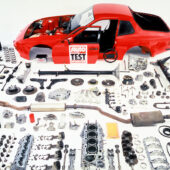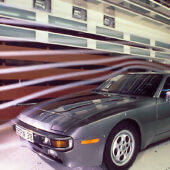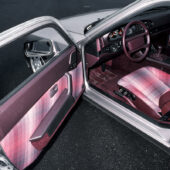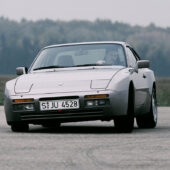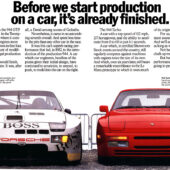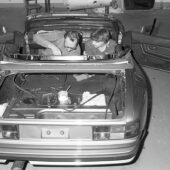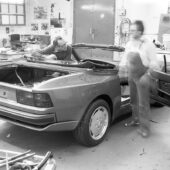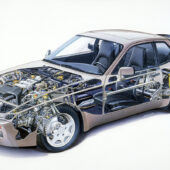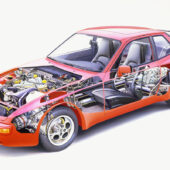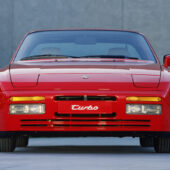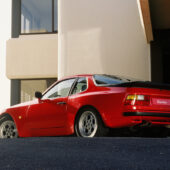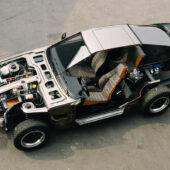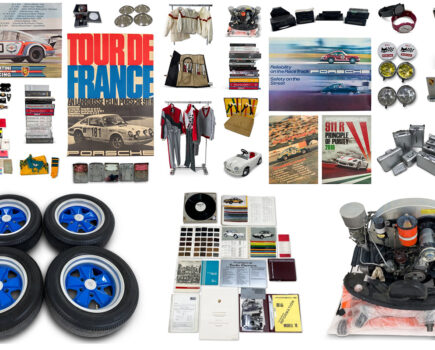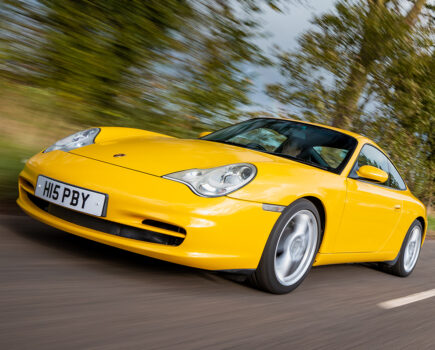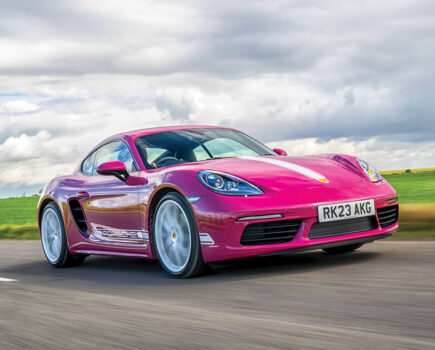An evolution of the 924 before it, the Porsche 944 was the brand’s best-selling model before the Boxster arrived. Here’s the full story of Porsche’s most popular transaxle sports car
Words: Richard Gooding
Launched in 1969, the big-selling 914 proved Porsche didn’t need to survive on a diet of rear-engined metal alone. By 1975, however, the two-seater’s time was up. That same year, the similarly radical 924 was launched. A dismissed Volkswagen project designed by Porsche using a mix of parts from both manufacturers (including a front-mounted 125bhp two-litre inline-four), even the new car’s near-perfect 53/47 front/rear weight distribution didn’t convince purists riled at a water-cooled configuration and non-Porsche origins. The first offering in the transaxle family was off to a difficult start.
Extensively developed throughout its production run, the Porsche 924 yielded high-performance Turbo and Carrera GT variants, as well as the 245bhp Carrera GTS. Sadly, despite this big power and impressive specification, the 924 failed to shake off the image of being a Porsche powered by an engine from a different manufacturer. In contrast, the later 944 was embraced as a Porsche in its own right.
The Porsche 944 was revealed at the Frankfurt Motor Show in September 1981. Looking as though the 924 had spent every waking moment in the gym after being picked on by the motoring press, the new car inherited its muscular, wide-arched styling from the aforementioned Carrera GT. The wedge had a familiarity about it, but there was no wheezy VW-sourced engine for 911 fans to complain about. This time, a new 2.5-litre four-cylinder powerplant designed and developed by Porsche itself was used. A development of a single cylinder bank from the 928’s V8 and equipped with twin counter-rotating balancer shafts to suppress vibration, the base 944 engine pumped out 163bhp, just seven ponies shy of 1978’s 924 Turbo.
While the Porsche 924 was considered Porsche’s entry-level model, the 944 was marketed as a cut above when it went on sale in the spring of 1982. Standard equipment included air-conditioning, electric windows, fog lights and tinted glass, all wrapped up in a 137mph performance package capable of delivering the zero to 62mph dash in less than nine seconds. Priced at DM38,900 in Germany and £12,999 in the UK, the Porsche 944 sat somewhere in between the 924 and 924 Turbo in Porsche’s product hierarchy.
To shrug off increased performance, disc brakes were fitted at each end of the new arrival. Even better weight distribution was achieved with a 51/49 front/rear balance. Just like the 924, the 944 was built at Audi’s former NSU factory in Neckarsulm, with the all-Porsche engine transported from Zuffenhausen.
To begin with, the 944 shared the earlier four-cylinder, water-cooled, front-engined model’s interior. What it didn’t have in common with the 924, however, was a reputation for being something of a non-Porsche ‘bitsa’. Yes, the 944 borrowed much of its style, some of its oily bits and most of its cabin furniture from the 924, but it was ordained as a ‘proper’ Porsche suiting the era’s mobile phone-toting yuppie to a tee — more than 26,500 944s found homes in 1984, with half of that volume making its way to the USA. Car and Driver was so impressed, it named the 944 America’s best-handling production car. Praise indeed.
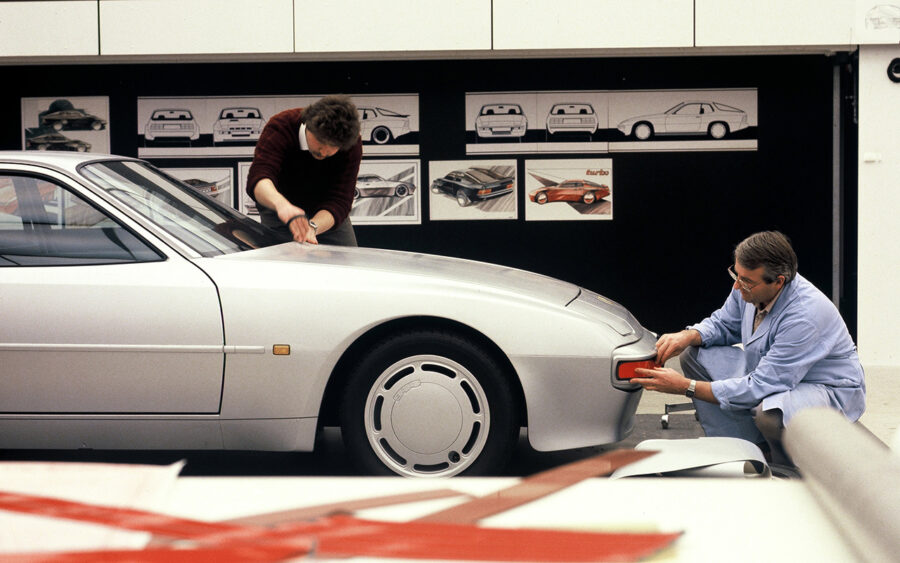
By 1985, the Porsche 944 was rolling on Teledials (wheels so-called because they resemble the dial of an old telephone) and screamed past the 55,000-unit sales mark. It’s worth remembering that despite split opinion the 924 found itself generating, the older transaxle was Porsche’s fastest-selling sports car. The 944 went on to eclipse its stablemate’s achievement. Indeed, after its first year of sales, the 944 accounted for more than fifty-one percent of total Porsche production. This wide-hipped coupe saved our favourite manufacturer’s bacon just when its coffers were beginning to look decidedly empty.
The highly anticipated Porsche 944 Turbo landed in late 1985. Given factory code 951 (952 for examples built to satisfy right-hand territories), the turbocharged 944’s air-to-air intercooler worked with a water-cooled KKK K26 turbocharger to push power up to 220hp with 244lb-ft torque. Compared to the normally aspirated 944, the Turbo was a monster: the dash to 60mph from rest took just 5.9 seconds, while top speed was (literally) boosted to 157mph. Four-piston Brembo brakes, sixteen-inch staggered alloys, stiffer suspension, an aerodynamic underbody, a rear lower spoiler and an integrated polyurethane front bumper made the model an enticing dish.
The 944’s brilliantly revised ‘oval’ dashboard design — so good it remained virtually untouched for 968 production in 1991 — was ported over to the Turbo, and with it came a boost gauge. Drivers needed to keep an eye on the speedo, too, not least because the 944 Turbo was the fastest four-cylinder production car of its time. Other developments included ceramic valve seats and a dedicated pumped cooling circuit for the water-cooled turbocharger.
Ballistic performance didn’t come cheap. Costing DM72,500, the 944 Turbo’s price translated to approximately twenty-five grand in the UK. The steep windscreen ticket didn’t deter a car-buying public with a thirst for speed, though. More than ten thousand 944 Turbos were sold in 1986, proving more than ever before how Porsche products remained attractive regardless of their price point. That said, due to the fact the 944 was getting so expensive, the 924 (initially pulled from price lists after the 944’s arrival) was reinstated. In 924 S guise, this ‘second coming’ made use of a detuned version of the 944’s stock 2.5-litre lump.
Also in 1986, Porsche launched the Porsche 944 Turbo Cup, the manufacturer’s very first one-make series, serving as a blueprint for the hugely successful Carrera Cup we all know and love today. There were five 944 Turbo Cup championships (France, Germany, South Africa, Canada and the USA) inviting privateers to purchase a modified 944 Turbo, complete with forty-percent locking limited-slip differential, staggered Fuchs wheels (superseded by magnesium rims), a magnesium intake manifold and sump, safety harnesses, a bigger turbocharger, beefed-up transmission, a tougher clutch, a dedicated transmission oil cooler, Matter roll cage and deletion of electrical toys, including air-conditioning, power windows and door mirror adjustability. Other than a race-ready Recaro for the driver, standard seats remained, allowing eager spectators to readily identify the race car with what was being offered in dealer showrooms.

The 944 Turbo Cup did away with soundproofing materials, sun visors, power steering, rear wiper and washer jets for the pop-up headlamps and featured upgraded Bilstein shocks, lowering springs, an adjustable ABS system and a lightweight battery. Weight-saving efforts ditched almost 272kg, affording the Turbo Cup a 5.3-second 0-60mph time and top speed of 170mph. It’s thought less than two hundred were manufactured, with almost half exported to Canada. Today, the 944 Turbo Cup is a highly desired collector car and recognised for galvanising Porsche’s dominance at the track in readiness for a new era of single-make championships.
ABS and front airbags became standard 944 equipment in 1987. This was a world first, as was the model’s ability to produce the same power with or without a catalytic converter. An S-badged version of the 944 appeared a short while later. Normally aspirated power and torque shot up to 190hp and 170lb-ft respectively. The sprint to 62mph was equally impressive, clocking in at close to seven seconds. Topping out at 141mph, the 944 S was offered to showroom visitors for the princely sum of £27,977.
Later, in 1988, a newer high compression engine saw the standard 944 pump out 160hp. The big news that year, however, was the arrival of the 944 Turbo S. With 250hp and 258lb-ft torque, the limited-run model was the most powerful road-going 944 yet. Not only did it feature a bigger turbocharger than the older 944 Turbo, the Turbo S included a limited-slip differential and bigger brakes as standard equipment. Unfortunately, while the Turbo S was arguably the most impressive 944, it was also the most expensive, emptying wallets for DM99,800.
As the decade was drawing to a close, the 944’s star was beginning to fade. Numerous shuffles to the models’ engine line-up took place in order to reinvigorate the range — the 944 Turbo gained the sixteen-valve unit from the Turbo S as standard equipment, while the base 944’s engine was bored out to 2,681cc in the pursuit of 165hp. Meanwhile, the 944 S became the 208hp three-litre 944 S2. As a cost-effective way of making the S2 more appealing to Porsche customers, the model was equipped with the Turbo’s bumpers and other body adornments, making an S2 and a Turbo virtually indistinguishable, much to the annoyance of owners of the force-fed Porsche. Significantly, the three-litre engine was the largest four-cylinder production powerplant of its time.
With a soft-top engineered by American Sunroof Corporation (ASC), the S2 Cabriolet was the first open-air 944, but going topless was a fussy operation, primarily because the roof needed to be manually detached from the upper windscreen frame. It was characteristically expensive trim: the 944 S2 Cabriolet came with a price tag of £36,713 in the UK and almost $53,000 in the USA.
Near the time of the 300,000th four-cylinder transaxle Porsche rolling off the production line in the summer of 1989, the entry-level 944 2.7 was dropped. Annual production fell to just 8,510 units, leading to the eradication of 944 Turbos from main dealer showrooms in the USA. A barrage of new competition was coming from the Far East, with well-built, price-matched offerings from the likes of Mitsubishi and Nissan promising more power from V6 engines.
In response to this threat from the Land of the Rising Sun, a 944 redesign was deemed worthwhile enough to extend the 944’s life a little longer. Thanks to Harm Lagaay (the original designer of the 924), the 944 S3 was expected to play an important supporting role to the evergreen 911 and slow-selling 928. Exposed pop-up headlamps, new smoother surface detailing and more integrated bumpers were penned, as was a new variable intake system named VarioCam (documented in the July 2021 issue of 911 & Porsche World). A revised cylinder head was also designed for the new 944, but with sales were dropping faster than the Turbo S could accelerate, the car got a new name. The 968 was born.
Production of the 944 S was halted in July 1991 after 163,302 944s were manufactured. This tally means the 944 was the most successful Porsche product until the arrival of the Boxster. Thanks to its genuine Porsche engine, the 944 didn’t suffer the same derision as the 924, but because it lacked an air-cooled beating heart, many 911 fans still refused to accept the 944 as the real deal. Thankfully, this attitude has changed in recent years — now more fondly remembered than other models in Porsche’s transaxle family, and with prices (and retro-coolness) on the rise, it’s difficult to imagine a better time to buy a 944 to call your own.
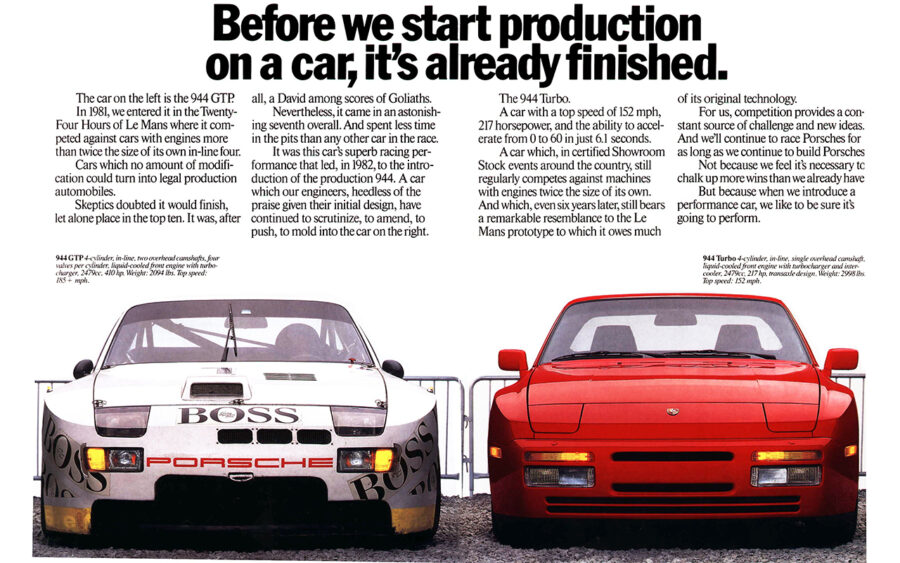
Porsche 944 timeline
1981
Porsche 944 revealed at the Frankfurt Motor Show in September
1982
Sales begin in spring, with prices starting at £12,999
1985
Porsche 944 Turbo arrives with 217hp
944 Cabriolet shown at the Frankfurt Motor Show
1986
Porsche 944 Turbo Cup series formed as the brand’s first-ever one-make race series
1987
944 S introduced with 187hp version of M44/40 2.5-litre four-cylinder
1988
944 Turbo S introduced with 250hp
1989
Revised ‘S2’ 944 arrives with 3.0-litre engine, new transmission and optional Club Sport pack
944 Cabriolet arrives on sale. Cars produced in part by the American Sunroof Corporation (ASC).
1991
944 Turbo Cabriolet unveiled; just 100 earmarked for the UK market
Porsche 944 production ends in July with 163,302 examples made
Porsche 968 unveiled as the 944’s replacement having begun life as an ‘S3’ version of its predecessor

